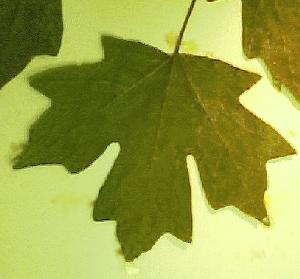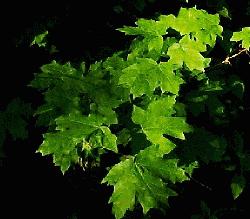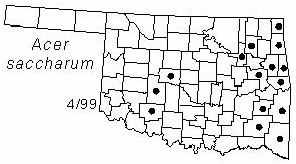

Tree to 25 m (80 ft) tall and 60 cm (2 ft) diameter, with very dense spreading crown. Bark gray and smooth, becoming thick, rough, and blackish on older trunks and branches. Twigs slender, reddish brown, glabrous, with small dark brown blunt buds. Leaves opposite, long-petioled, blades 5-11 cm (2-4.3 in) long and usually about as wide, with 5 shallow blunt or short-pointed lobes, edges coarsely toothed, dark green and glabrous above, whitish and more or less hairy below, turning intensely red, orange, or yellow in fall. Flowers numerous in clusters on long stalks in early spring, greenish-yellow, about 5 mm (0.2 in) long. Fruits paired samaras 2-2.5 cm (0.8-1 in) long clustered on long stalks, red to red-brown, maturing in late summer or fall.
Distribution: The species is widespread in mixed hardwood forests and is native to much of the eastern United States.
Habitat in Oklahoma: mesic upland forests and well-drained bottomland forests in the Ozark-Ouachita region, bottoms of deep narrow canyons in Caddo and Canadian Counties, and mountain slopes and canyons in Comanche County.
Comment: Sugar maple produces maple syrup, strong hard fine-grained wood used in furniture, and is an excellent shade tree. The seeds are eaten by squirrels and birds. Acer is the old Latin name for maples; saccharum refers to the sugar in the sap.
NWI status: UPL
Distribution in Oklahoma: 
BACK
NEXT
RETURN TO INDEX
Last update: 9/7/99
 Go to Oklahoma Biological Survey Home Page
Go to Oklahoma Biological Survey Home Page
 Disclaimer
Disclaimer